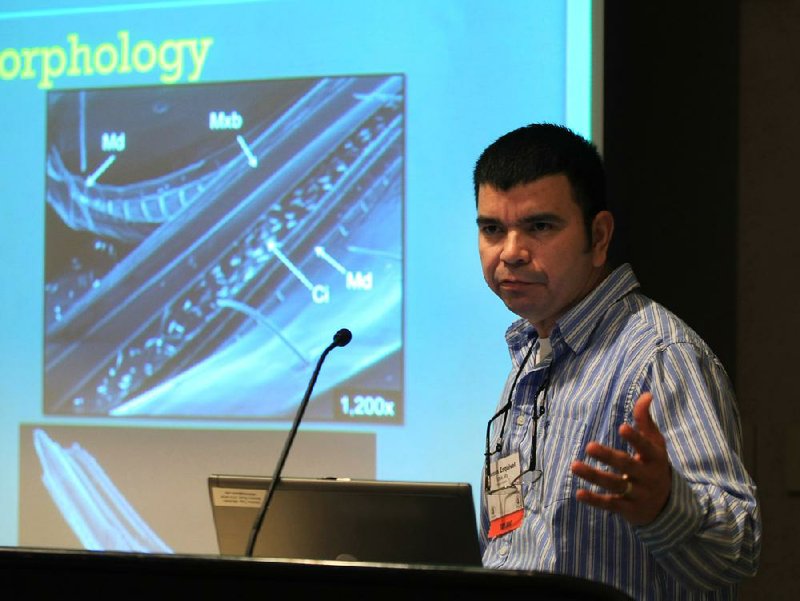LITTLE ROCK — Farmers in Arkansas aren’t yet having to deal with the effects of a mild winter this year, but insects are.
The bugs are emerging earlier than normal — in many cases not finding the nourishment they need to sustain themselves, said Glenn Studebaker, an extension entomologist with the University of Arkansas Division of Agriculture.
On the other hand, the warmer conditions may lead to increased insect populations in some cases and eventually more work for farmers trying to keep the bugs off their crops.
Another possibility is “we could have a late-season freeze that kills off the insects,” Studebaker said in an interview.
“I wish we had a crystal ball and I could tell you for sure what’s going to go on. These are things that could happen,” he said.
He and about 400 other entomologists from throughout the Southeast and Southwest are meeting at the Peabody Little Rock hotel to discuss insect control methods at the annual regional Entomological Society of America conference.
The National Weather Service in North Little Rock reports on its website that winter temperatures for Arkansas this year have been “far from normal.”
In January, high temperatures throughout the state were on average 5.9 degrees above the normal average high of 51.9 degrees, Matthew Clay of the National Weather Service said.
“Normally we have these really deep freezes and we really didn’t get that this year,” Clay said.
Studebaker said he has seen insects called aphids popping up in the state. An aphid is a “sucking pest” that takes the juice out of a crop. The bug also spreads diseases, he said.
“By building up early, [aphids] could have a detrimental impact on crops this year,” he said.
Robert Wiedenmann, head of the University of Arkansas department of entomology, agreed with Studebaker that “one can not generalize what will happen. For some species it will be worse this year, for others it won’t be as bad.”
Wiedenmann and Studebaker agree that farmers should be clearing fields of weeds ahead of planting, as many insects thrive in weeds, then spread to crops.
Wiedenmann, who leads the Southeastern branch of the society, said that by the end of today there will have been 187 presentations since the conference started Sunday.
Presentations covered a vast range of subjects, including:
Insect losses in Southern soybeans.
Feeding behavior of aphid species on seed-treated soybeans.
Multifunctional trap cropping system for managing stink bugs in Georgia.
Jesus Esquivel, a U.S. Department of Agriculture research entomologist at College Station, Texas, presented “Advances in Understanding Stink Bug Feeding Mechanics and Pathogen Transmission.” The presentation focused on understanding just how the mouths of stink bugs work and how the bugs’ feeding can transmit disease to cotton.
“I just have one little aspect of the stink bug,” Esquivel said. “[My colleagues] are studying totally different aspects of the stink bug.”
Business, Pages 25 on 03/07/2012
